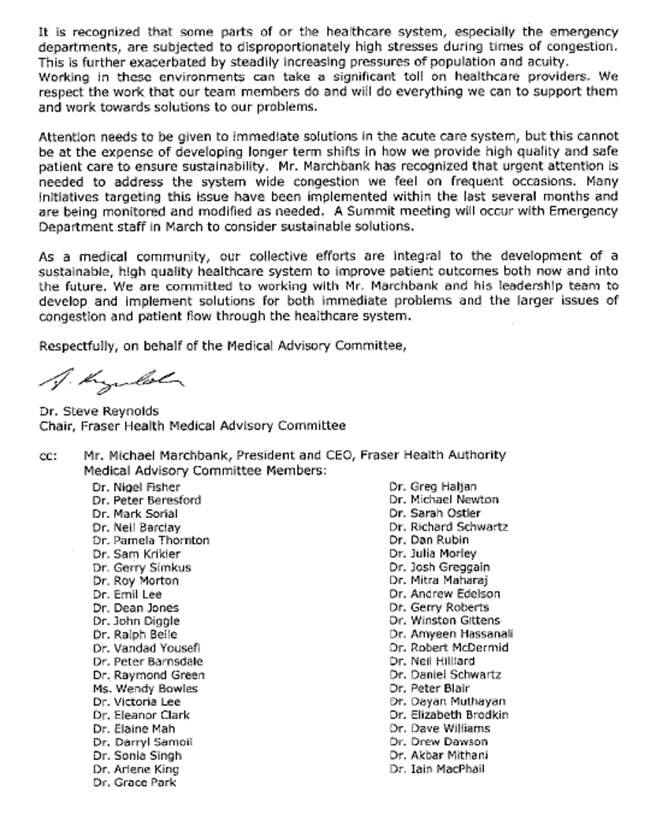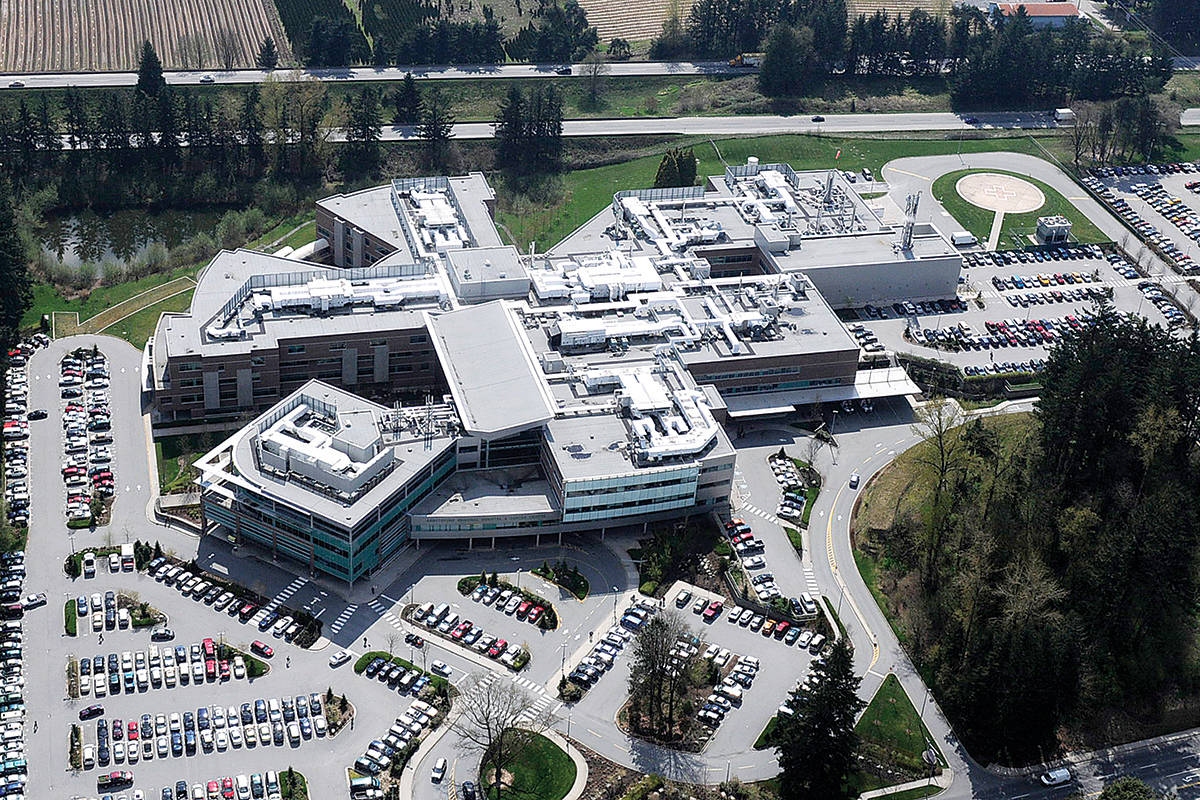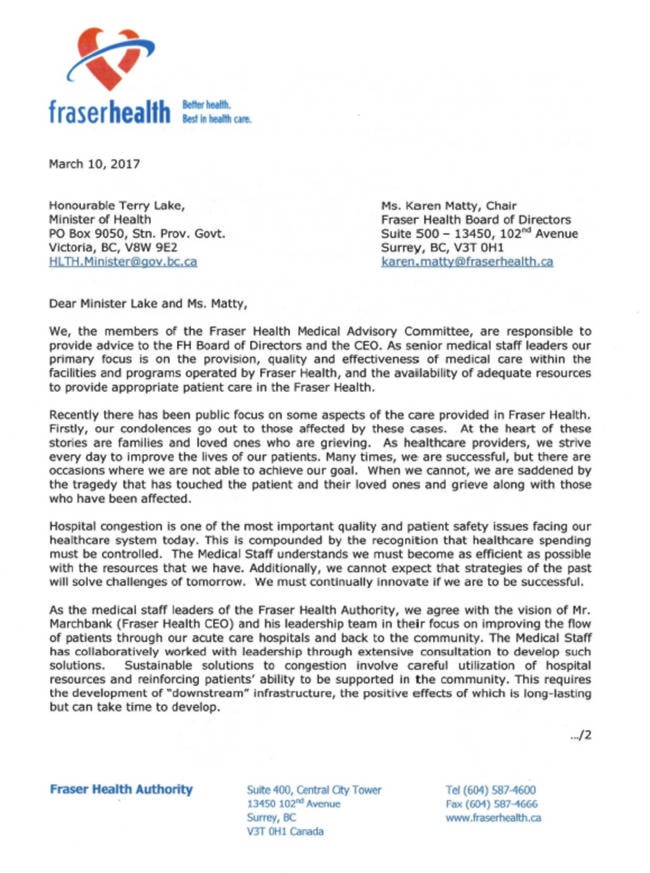While congestion in local hospitals has eased in recent months, health care officials may never entirely solve the challenges posed by a rapidly aging population, a senior Fraser Health doctor says.
A March letter from doctors on Fraser Health’s Medical Advisory Committee to Health Minister Terry Lake threw the physicians’ support behind a plan to increase out-of-hospital supports for patients. The strategy is intended to alleviate persistent congestion challenges in Fraser Health’s hospitals, which have operated over-capacity for more than five years. The letter, which was obtained by Black Press through a Freedom of Information request, came after two patients died after being sent home from Abbotsford Regional Hospital’s emergency room.
While congestion issues have not been directly tied to deaths, studies have shown crowded hospitals are linked to higher rates of patient morality and physician error.
In a recent interview, the chair of the committee, Dr. Steve Reynolds, told Black Press that it had been important to show support for Fraser Health CEO Michael Marchbank and his plans.
Previous “status quo” plans had the health system heading “for a disaster,” Reynolds said. “This is the right way to go. Yeah there are bumps in the road, yeah there are some challenges but this is a strategy that will be the best for patients in the long-term.”
Reynolds said recent months have seen congestion in the system drop, and he attributed those improvements to a range of initiatives focused on speeding up the discharge process and providing care for people who don’t need to be admitted. But patient volumes will continue to challenge health care providers for decades to come as the population continues to age.
“I don’t think it’s necessarily a fixable problem with the perspective and the resources that we have,” he said. “Is it the best strategy forward to try to maximize our impact? Yeah, I do think so. I think this is the right direction, this is the way we have to go.”
Reynolds said health officials must look at hospitals as just one of many tools to fight sickness in the community.
“What a hospital is really good at is taking people who are acutely sick, and making them better and getting them home,” he said. “And if we ask a hospital to do its primary job but also house people … it really is a very inefficient way of doing things.”
While the Canadian health care system may face cost pressures, Reynolds said other countries show there is room for improvement when it comes to the efficient use of resources.
“We know a huge investment of resources isn’t coming, but, to be honest, money doesn’t always equal the best quality.”
Instead, Reynolds said a focus on preventing illness, and helping people in their homes and outside of hospital can improve public health without large sums of money.
“The value we get in terms of the dollar we pay, isn’t the top and I think we have a lot of room to drive that quality. It is reasonable to expect our health care system to give top quality care – which I think we really do – but also to do it in a cost-effective way.”
The letter to Lake said “attention needs to be given to immediate solutions in the acute care system, but this cannot be at the expense of developing longer term shifts in how we provide high quality and safe patient care to ensure sustainability.”
@ty_olsen
tolsen@abbynews.com
Like us on Facebook and follow us on Twitter.


